
The first officially imported Hondas came to America in 1959 and included “dry sump” 250cc Dreams, the model CA76. By 1961 the 305cc wet sump model with electric starting, the CA77, had arrived and became popular almost instantly.
After experimenting with a few versions of 250cc parallel twin overhead cam engines in the late 1950’s Honda locked onto a unit construction ball and roller bearing OHC design in 1961 that would be made by the tens of thousands in several versions until the CB350 arrived in 1968. The Super Hawk, Scrambler and Dream were Honda’s biggest bikes in this era until the DOHC CB450 came along in 1965.
Simple to manufacture and distinctive in the Honda Dream’s design are the pressed steel leading link fork, frame and swingarm in what some refer to as “pagoda styling” along with 16 inch wheels typically shod in whitewall tires. Fully sprung seats came in red, blue and black not necessarily matching the bike’s body paint. Dreams had enclosed chains, 12 volt electrics, square headlights, decent tool and patch kits plus available options like saddlebags and fender guards.
For most manufacturers, electric starting was not a requirement. The Harley-Davidson big twins added it in 1965, only a few models of British and European bikes had it in the mid to late 1970’s. The Dream and even some of the smallest Hondas offered electric starting standard which increased their market immensely. Sure, if carbs and ignitions were spot on and the rider knew the starting drill, many bikes were one kick starters. But electric starting added some dependability, especially when a novice rider stalled at a light.
The collection on view at the National Motorcycle Museum includes almost 100 interesting “entry level” motorcycles from around the globe, and dozens from Japanese manufacturers that may help you recall your youth.
Specifications:
- Engine: Overhead Cam Parallel Twin
- Type: Air-Cooled, 360 Degree Crankshaft
- Bore & Stroke: 54mm x 54mm
- Displacement: 305 cc’s
- Compression Ratio: 8.2 : 1
- Induction: 22mm Keihin Carburetor
- Horsepower: 20HP
- Primary: Chain Driven
- Final Drive: Enclosed Chain
- Clutch: Wet Multi-plate
- Transmission: 4-Speed
- Frame: Pressed Steel
- Fork: Leading Link, Pressed Steel
- Rear Suspension: Swing Arm / Twin Shocks
- Wheels & Tires: 3.25″x16″ Whitewall
- Brakes: Drum, Front & Rear
- Wheelbase: 51.5 Inches
- Weight: 356 Pounds
- Top Speed: About 80mph
Leave a Reply
Want to join the discussion?Feel free to contribute!




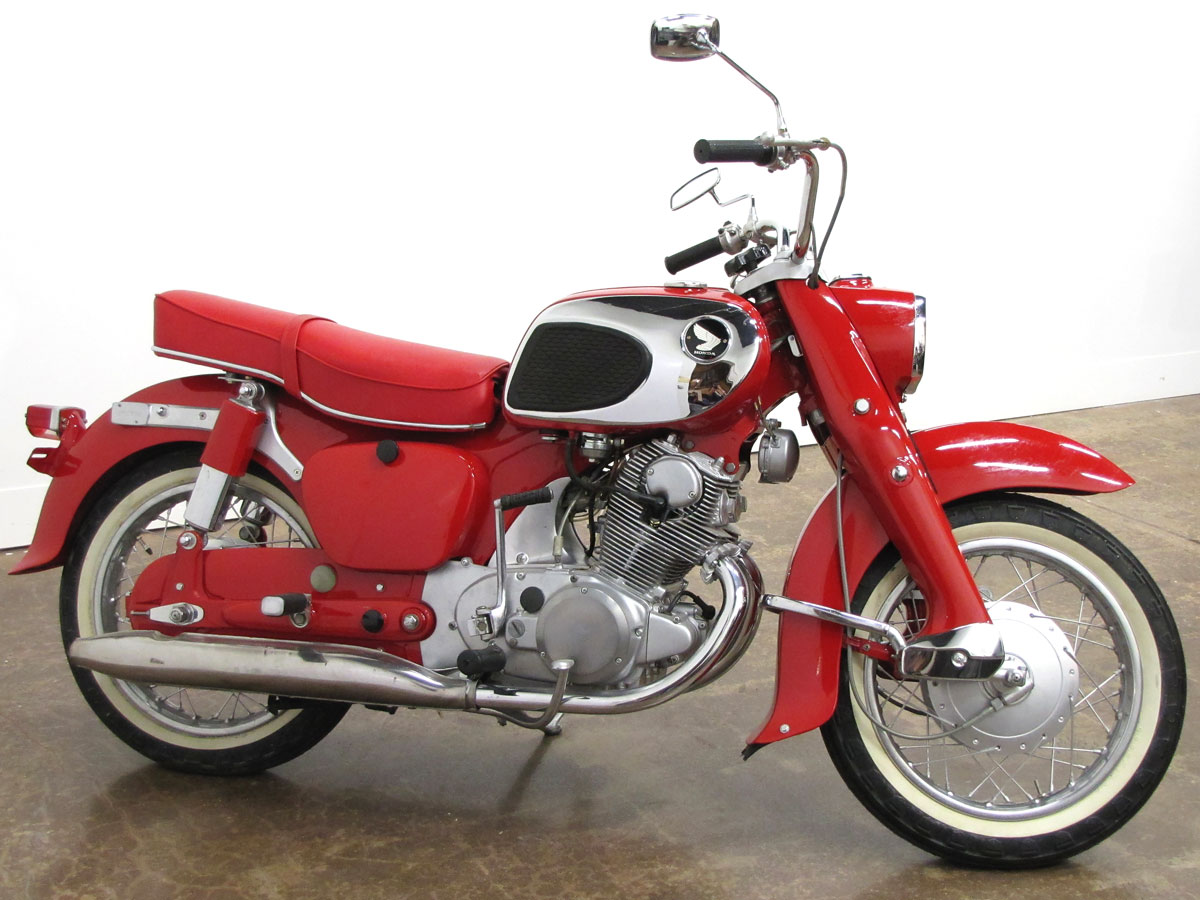


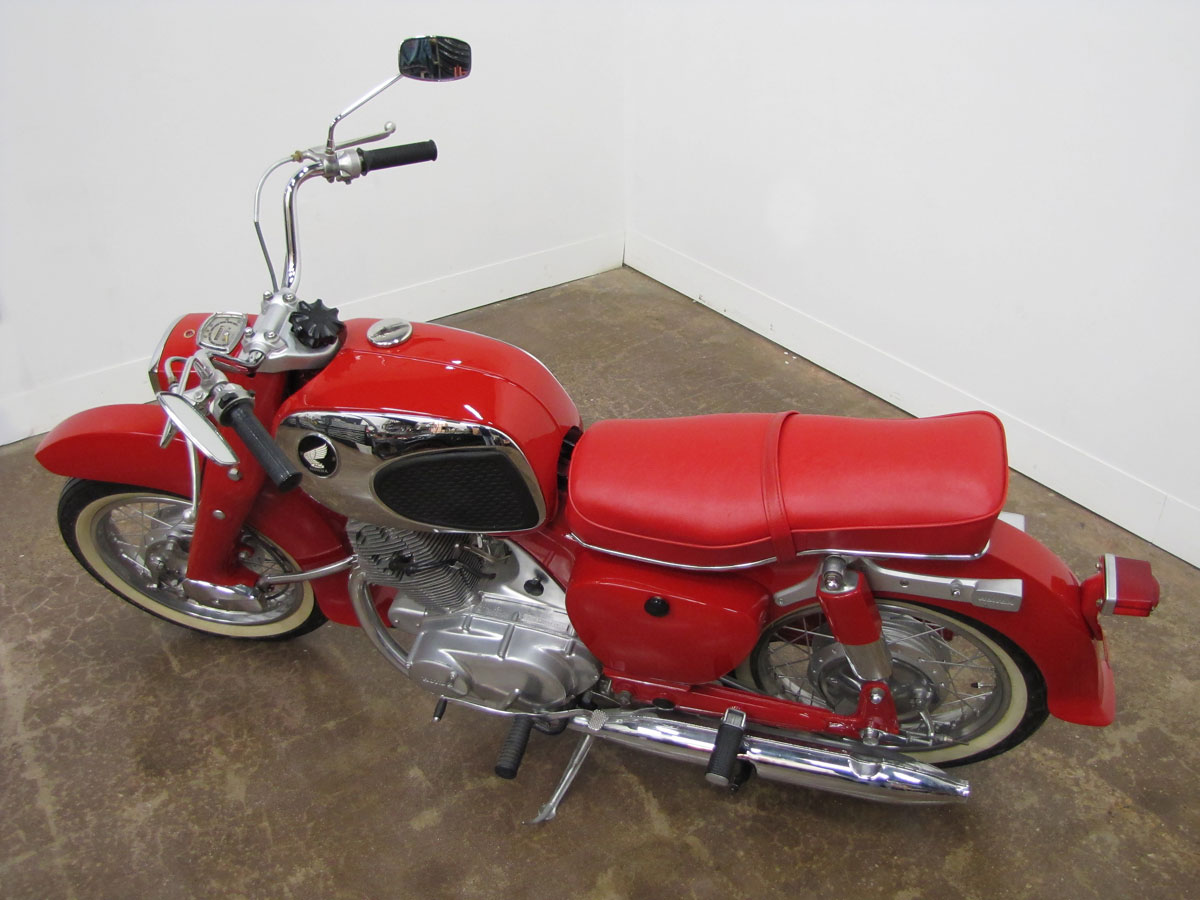
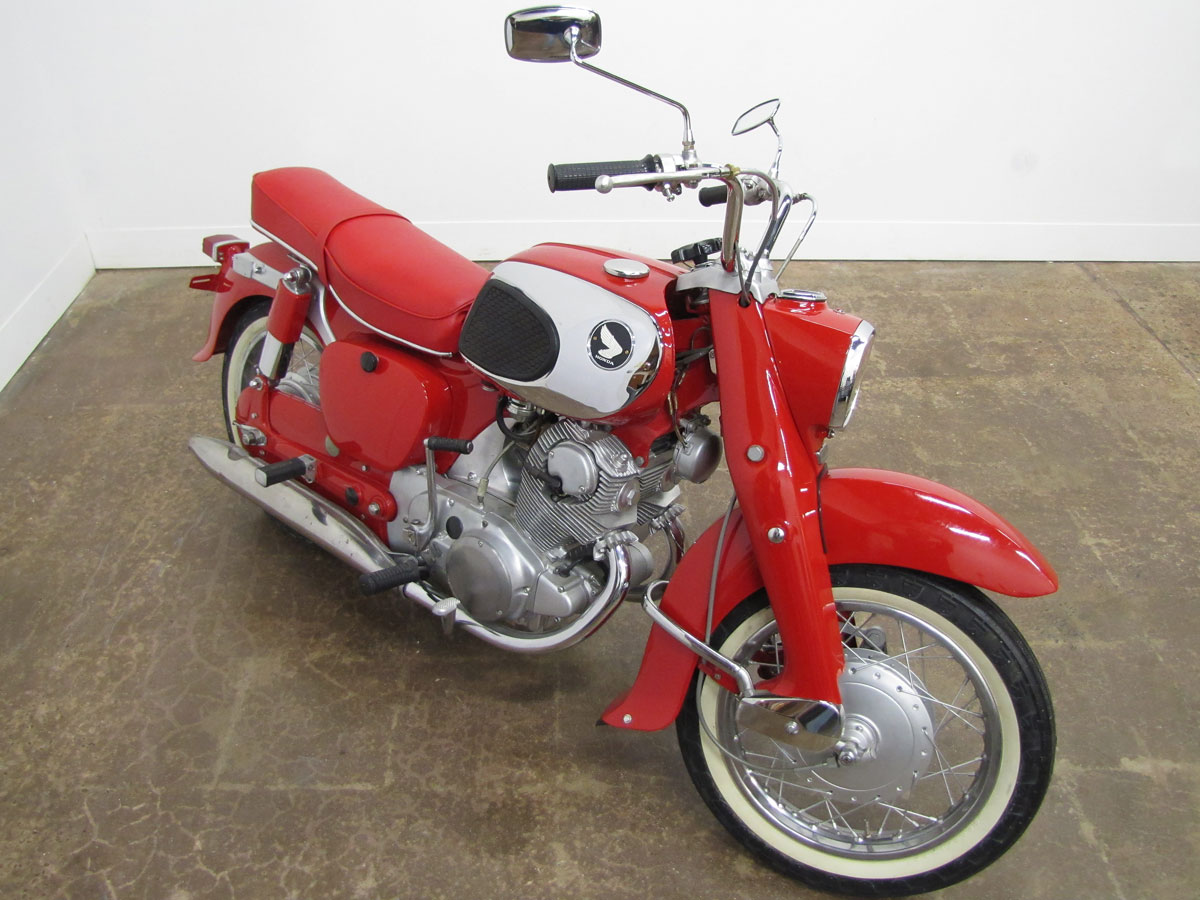




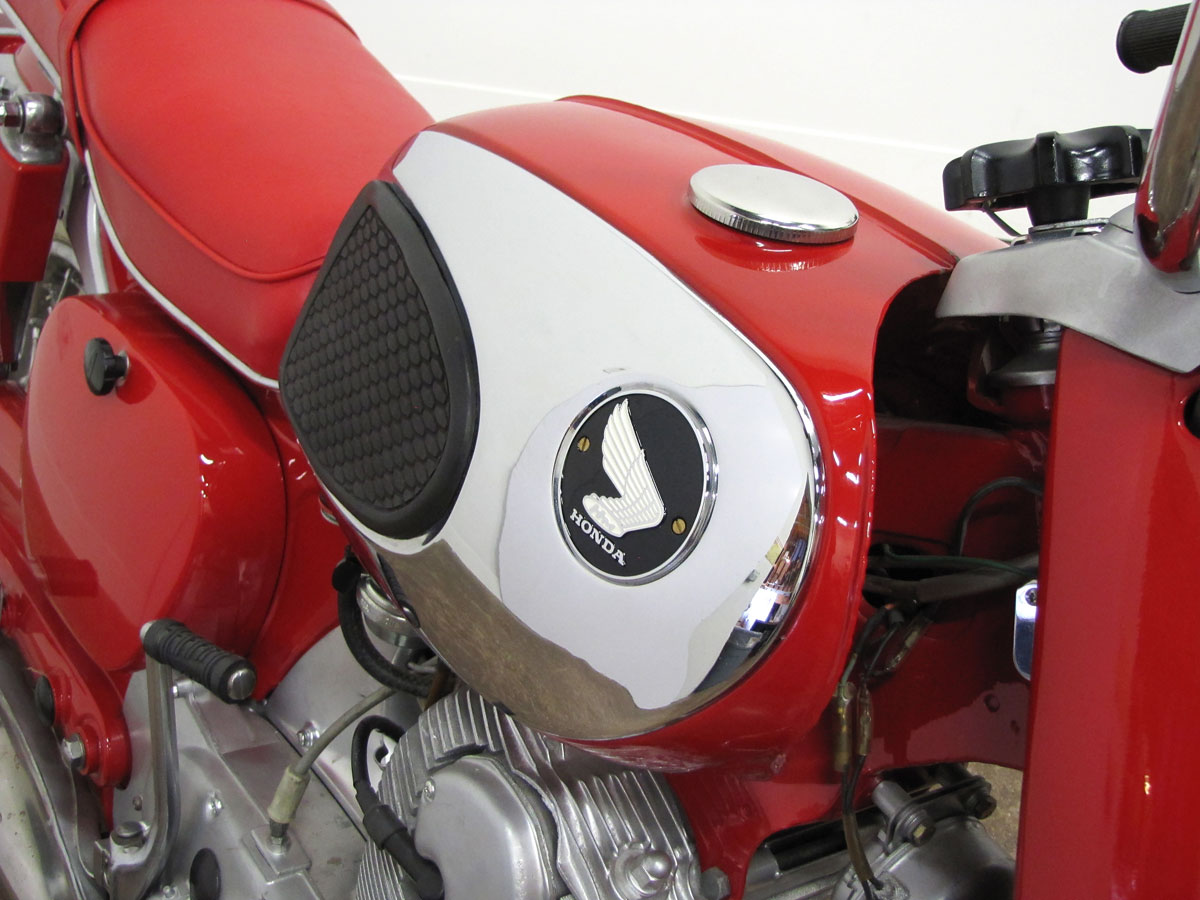














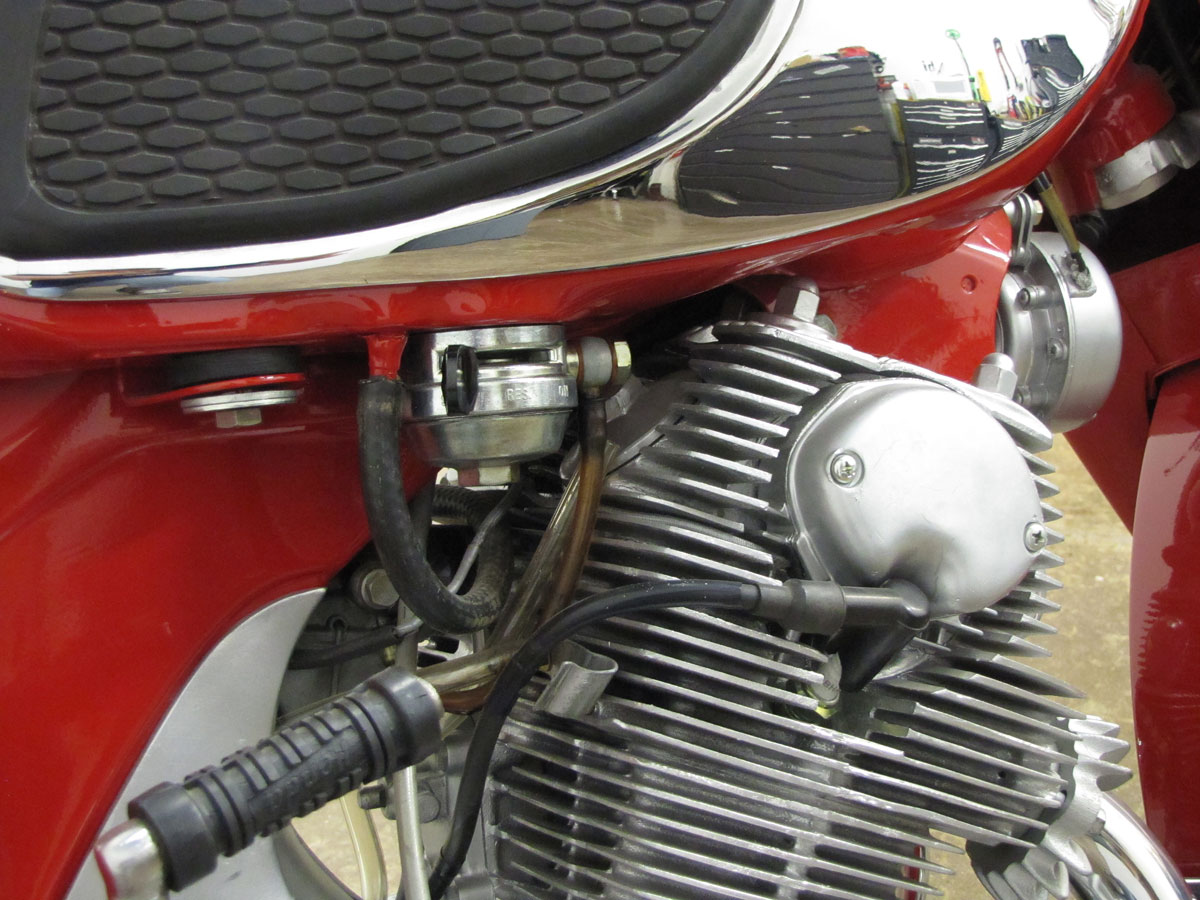






Living in Tokyo, Japan in 1958/59 I saw these bikes and rode all of them. As I recall the 305 Honda Dream also had a rotary gear box which did not require down shifting to get back to first gear at a traffic light. They also had turn signals and many had swept up exhausts. The handlebars weren’t like those in the US, but were stamped steel. Really great bikes selling for about $600.00 in Japan.
Restore it, how bad can it be, interest in selling it?
Where is it located and what year and model
I have a 1967 305 Dream & would consider selling
Where is honda dream 305 located, what is asking price, mileage, how well does it start and run. Any repair issues required.
Thanks
Bill
I recently purchased a 1964 Honda 305 Dream…not sure what to do with it ,restore or sell for parts?….any ideas?
Cliff, where is it located and what is your asking price?
bill out of jupiter fl
Cliff where is bike locred and whst would you take for it.
bill jupiter, fl
Wilcodd@aol.com
I have a 1966 CA77 in the same red color with 8000 miles and the original owner service manual which has some inelegant use of the English language. The bike still runs and is a good reminder of the early days of Honda in the USA. Nice to see it featured here!
terry where is bike located and what would you take for it?
I have been collecting the Honda Dream motorcycle for several years now enjoy working on them and chasing them down all over the Midwest you meet the nicest people
Where is a good place to find original parts for the ca77
Ebay is nowadays the best source for parts for these vintage Hondas. Just be sure to get a parts list with VIN#s in order to avoid frustration. Honda made a lot of changes during the production run and not all parts interchange. Also there are a lot of misidentified parts listed(CA77 when it is a CL72 part etc).
Are the 1965 and 1968 305 dream parts interchangeable?
I have a 1969 305 Dream. It has 8300 miles on it. I was driving it one day and it just acted like it ran out of gas. I had just filled the tank. Petcock was on, it turns over but won’t start. Any ideas?
Sounds like gas line is dirty or not gretting spark to plugs. If want to sell contact me via my email
Also check for any lose wires coming from condenser to coil. Wish i had a engine manual in front of me so i could be of more help
Hopsdog, did you ever get 1969 Honda 395 Dream started, or did you sell it. If still for sale where can I see it?
bill wilcodd@aol.com
Im looking for a rear shock for one of these , without costing an arm and a leg
2202350380
My first street bike back in 74 – today riding a CVO Harley
I am currently restoring a 1965 Honda Dream where can a fella get parts
Ebay is a good source. Also Thailand . I have a 65 dream . work in progress. Some parts like headlight you’ll have to make.
Ebay is a good source. Also Thailand . I have a 65 dream . work in progress. Some parts like headlight you’ll have to make.
I just bought my grandfathers 1962 honda dream 300/305 from him that he purchased new in 1962. My uncle has had it for 20 years and destroyed the engine. I’d like to get another engine for it to see my grandfather ride this bike once again. He’s 86 and this was his pride and joy
How many 1963s were made/sold?
I have a 1963 restored 305 that I would be interested in selling. Located in Michigan